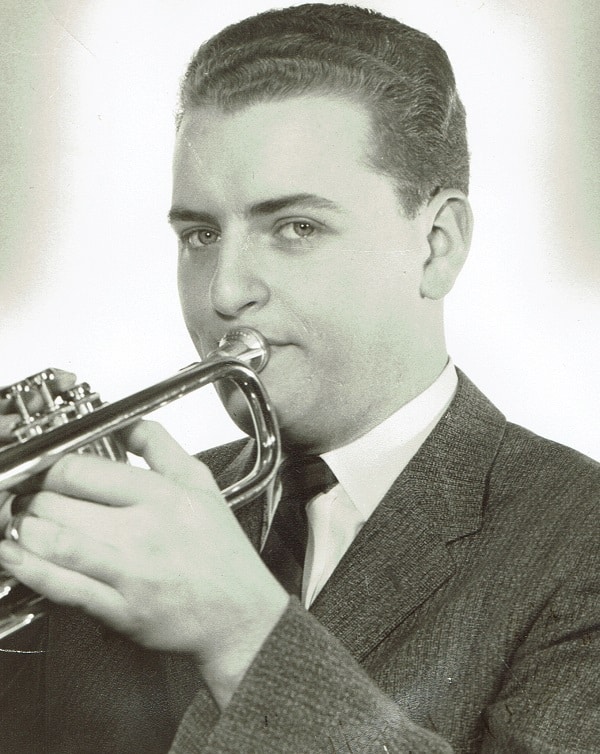Mom wrapped up the conversation, hung up the phone, immediately picked it up again, and dialed Morley’s number. He somehow convinced her it would be OK for me to travel to Toronto overnight with a trainful of rowdy college football players, cheerleaders, and banders, to play with the McGill band at the championship football game. With a definite air of resignation, Mom shrugged “OK” and off I went.
On game day in Toronto Morley handed me a sousaphone. You’ve probably seen one. From the mouthpiece – that’s what you blow into – it winds upward around the body, like a boa constrictor, to the imposing front-facing bell – where the sound comes out – nearly two feet in diameter and vertically positioned high over your head. It sounds like a tuba, but it doesn’t look like a tuba. Usually placed in the front row of a marching band, there are generally at least two, one at each end, they’re hard to miss. I had seen but never played one before that day.
The band paraded along Toronto’s Bloor Street West in crisp red and white McGill uniforms, with instruments shining, sousaphone bells reflecting the late summer sun, and cheerleaders spinning their batons, into Varsity stadium. It was more fun than yesterday’s train ride from Montreal. Inside on the field the Bronx cheer – a resounding raspberry – from Toronto fans, fell on cheer-deaf ears and we marched down the field.
McGill lost, Morley snapped his baton in dismay. My own weekend experience was more satisfying and a lot more fun, but nolo contendere compared to learning music theory. Morley’s lessons at music camp were like catnip to Puss. The study book, Stewart McPherson’s Practical Harmony, has Property of Morley Calvert, handwritten, on page one; it’s still sacred to me. Seduced by those early lessons, I continued on my own, savouring McPherson’s music exercises. I borrowed books from the library and from other people, bought second hand books when I could afford them and kept studying and writing, or trying to.
When jazz inevitably came to my attention around 1954 I left The Salvation Army band. At first, I played tuba in a dixieland band, led by a McGill medical student, at fraternity parties and YMCA dances. Then, sometime around 1955 I first heard Vernon Isaacs, a jazz musician from Texas via Kansas City, at a Montreal night club. Saucily named Chanticlair, Le Coq d’Or, it was on Notre Dame Street, near Bonsecours Market. Today that’s the area gently referred to as Old Montreal: I just knew it as a sleazy part of the city, where jazz flourished. Many nights I went to the club with a high school friend and the ladies of the night for company. The doorman looked the other way – no id was ever checked – and we nursed a beer and sat enchanted by Vern’s bluesy alto saxophone, drummer Walter Bacon and pianist Wray Downes, until the smallest of hours. The group was rounded out – quite literally – by a singer I remember only as Li’l Bea. Little she wasn’t, but she could sing!

A nightclub style publicity head shot of Lloyd Hiscock playing trumpet around 1958-9





FEDERICO B GIMENEZ4 years ago
Lloyd, I did not expect that the short story would be autobiographical. Before reading it and for having met you and becoming friends in the 1980s, we thought of you as a computer techie with a flair for music and a desire to develop yourself in that area. Now we know that music was really your first love and your first skill since childhood and also, we now know that you have really done well in this. Congratulations. You are so lucky and successful and all the credit belongs to you. How many people grow to be our age with never ever really being able to work in something that one loves? You are one of the few. Both Tita and I read your short story and loved it. We now realize that, in addition to your techie and music skill, you also have a very promising writing ability. What other surprises are you keeping for future disclosure? Thanks for sharing it with us. Fred Gimenez